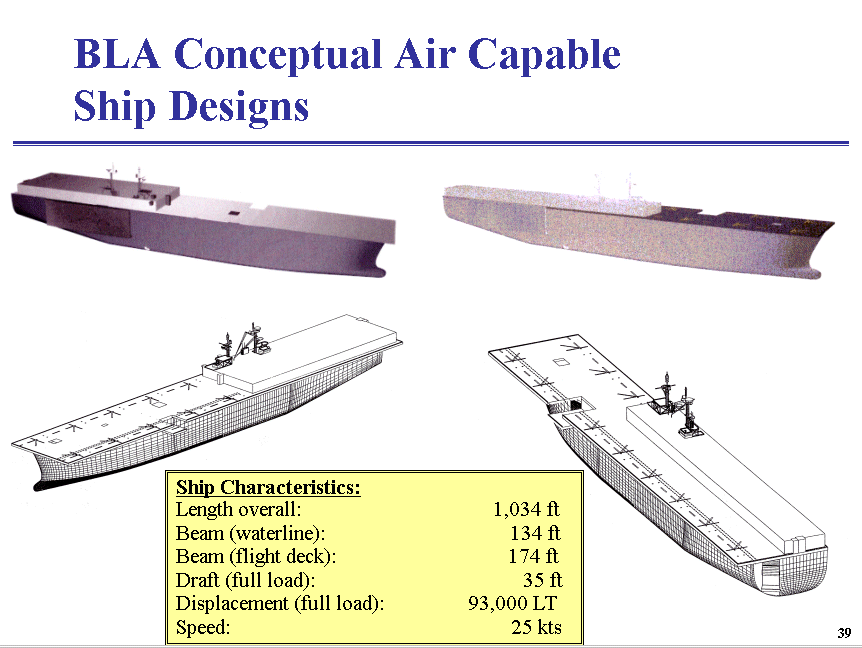- 鐵幣
- 26461 元
- 文章
- 11533 篇
- 聲望
- 11136 枚
- 上次登入
- 19-10-17
- 精華
- 175
- 註冊時間
- 05-12-25
- UID
- 215856
  
|
原文:
BLA概念上,具空中艦載能力船艦設計圖

The two BLA sea base ships share a common hull, and internal design to the main deck. The minimum air capable ship, on the left, has a flight deck forward, and a large superstructure house aft. The fully air capable ship, on the right, has a smaller superstructure house on the aft-starboard side of the flight deck, and more open deck space, including a full 1,000 feet for JSF takeoff runway. Both ships have a port side quarter-stern ramp for pierside RO/RO discharge, and a external integrated landing platform (ILP) for assault craft interface on the starboard quarter. The flight deck has a 40 foot overhang on the port side. The internal-external gantry crane system rails run under this overhang.
The cranes travel from the internal, under flight deck area through large cargo hatches to the external rails. The ILP and gantry crane system limit the ship to berths “port side to” the pier. The flight decks are not optimized for naval aircraft operations. Helicopters and VSTOL aircraft routinely land from the aft of the ship. The arrangement of the superstructure requires aircraft to land forward of the deck house. The JSF takeoff runway requires planes to taxi down the runway and turn in the narrowest part of the deck. The cargo/aircraft elevator also interrupts the takeoff run area. All of these design issues could be corrected in subsequent stages of design with little additional cost. |
|
